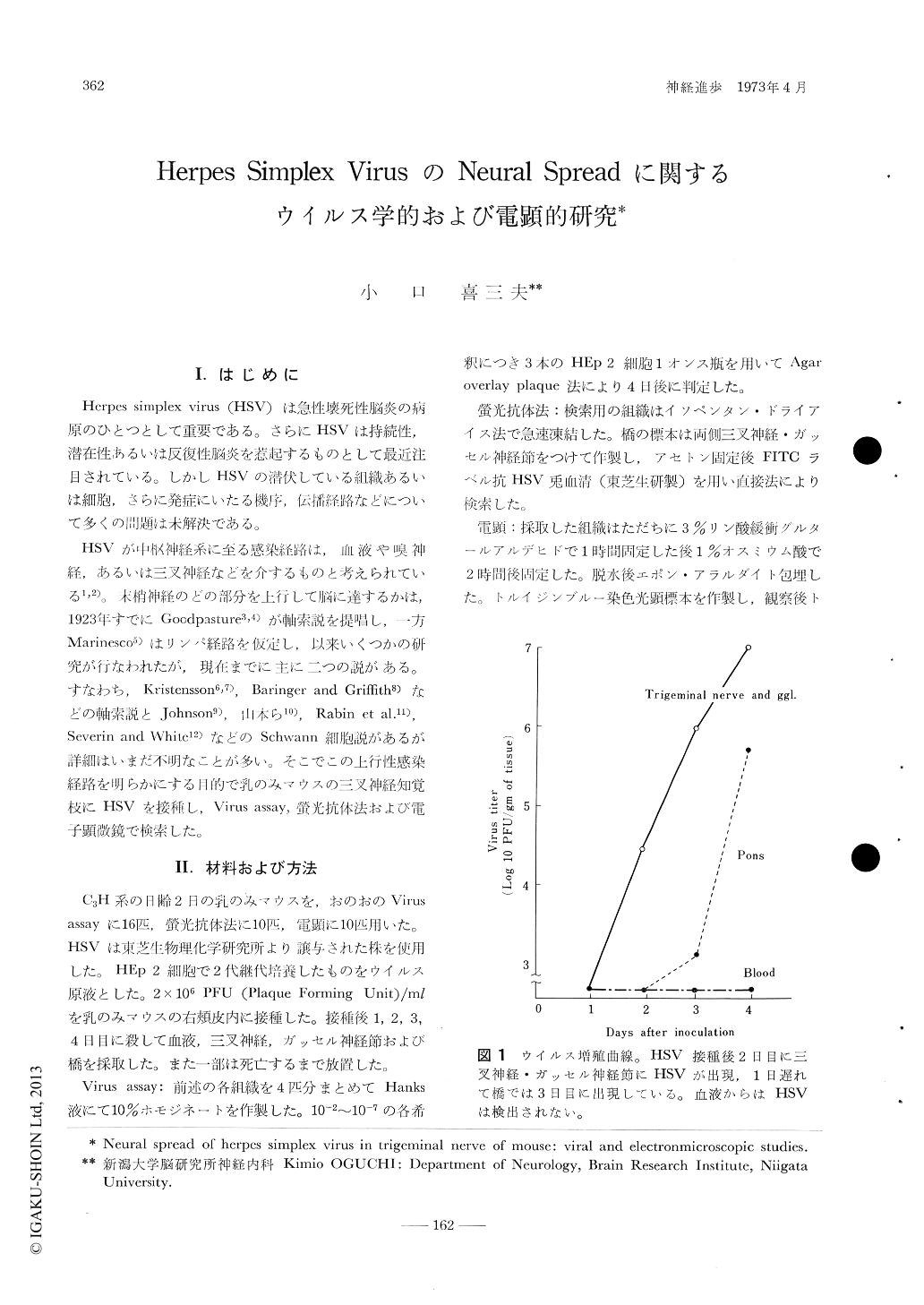Japanese
English
- 有料閲覧
- Abstract 文献概要
- 1ページ目 Look Inside
I.はじめに
Herpes simplex virus(HSV)は急性壊死性脳炎の病原のひとつとして重要である。さらにHSVは持続性,潜在性あるいは反復性脳炎を惹起するものとして最近注目されている。しかしHSVの潜伏している組織あるいは細胞,さらに発症にいたる機序,伝播経路などについて多くの問題は未解決である。
HSVが中枢神経系に至る感染経路は,血液や嗅神経,あるいは三叉神経などを介するものと考えられている1,2)。末梢神経のどの部分を上行して脳に達するかは,1923年すでにGoodpasture3,4)が軸索説を提唱し,一方Marinesco5)はリンパ経路を仮定し,以来いくつかの研究が行なわれたが,現在までに主に二つの説がある。すなわち,Kristensson6,7),Baringer and Griffith8)などの軸索説とJohnson9),山本ら10),Rabin et al.11),Severin and White12)などのSchwann細胞説があるが詳細はいまだ不明なことが多い。そこでこの上行性感染経路を明らかにする目的で乳のみマウスの三叉神経知覚枝にHSVを接種し,Virus assay,螢光抗体法および電子顕微鏡で検索した。
Several works on herpes simplex virus (HSV) have shown that virus may spread to the central nervous system along peripheral nerves. The present study aims to verify the finding by virus assays, immunofluorescence methods and electron microscopy. HSV was inoculated subcutaneously into the face of 2-day-old suckling mice. Trigeminal nerve, Gasserian ganglion and pons were examined within 4 days after inoculation.

Copyright © 1973, Igaku-Shoin Ltd. All rights reserved.


